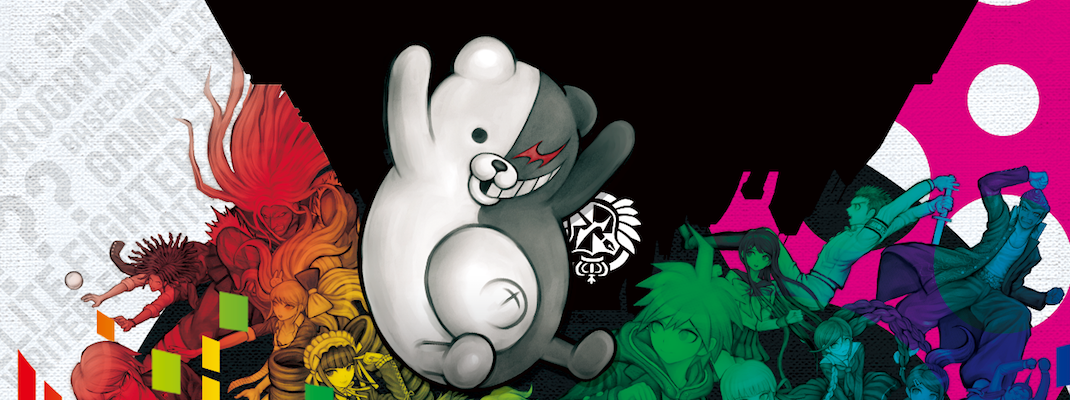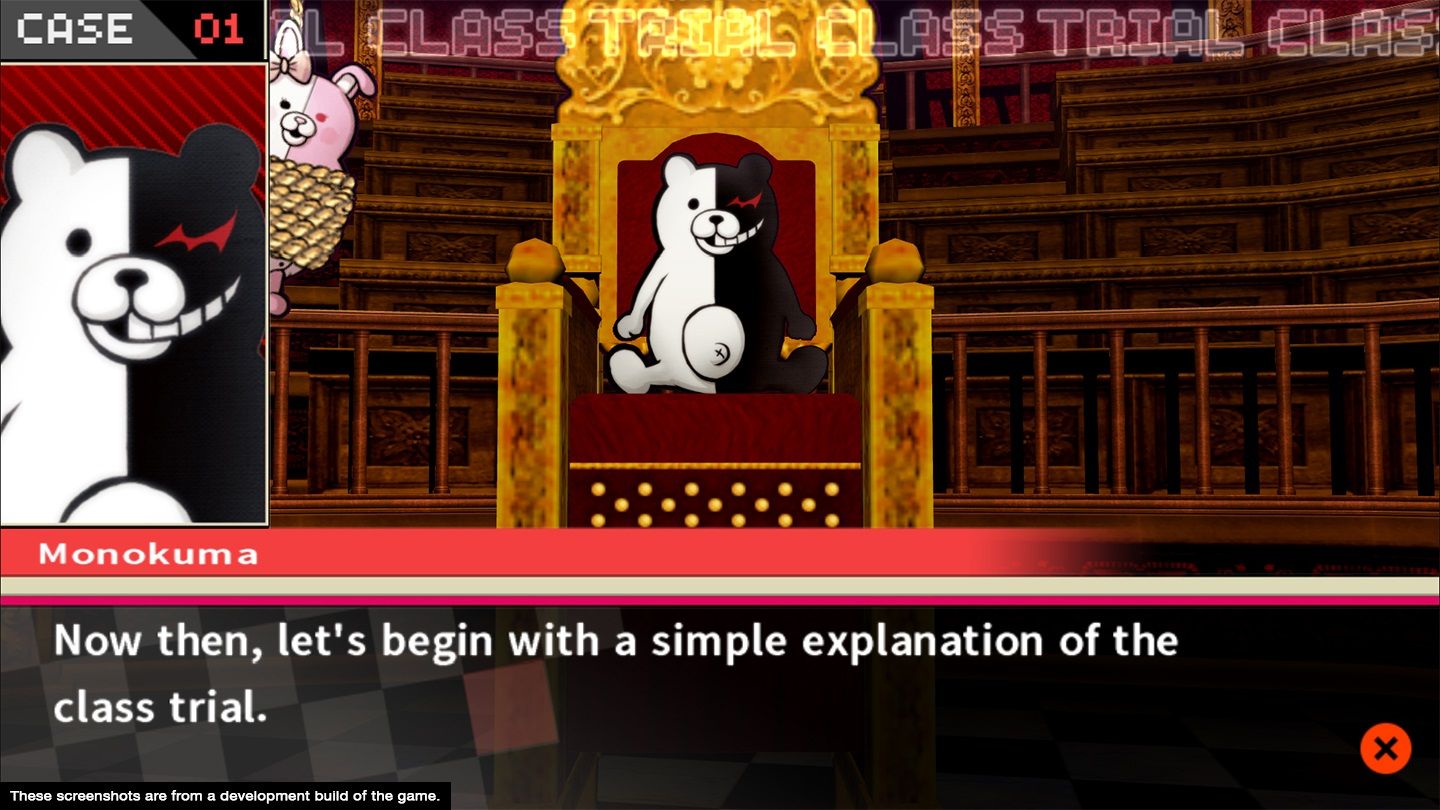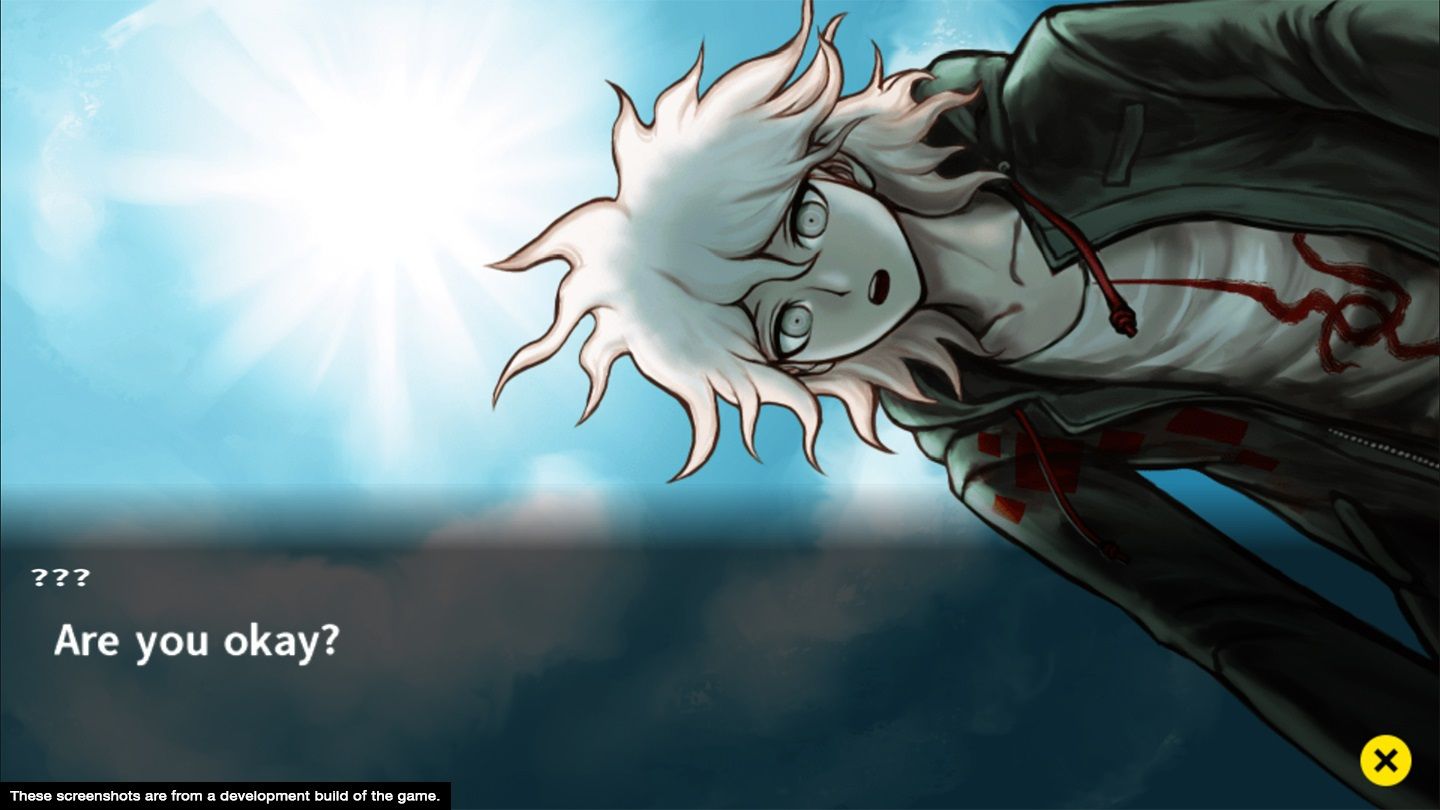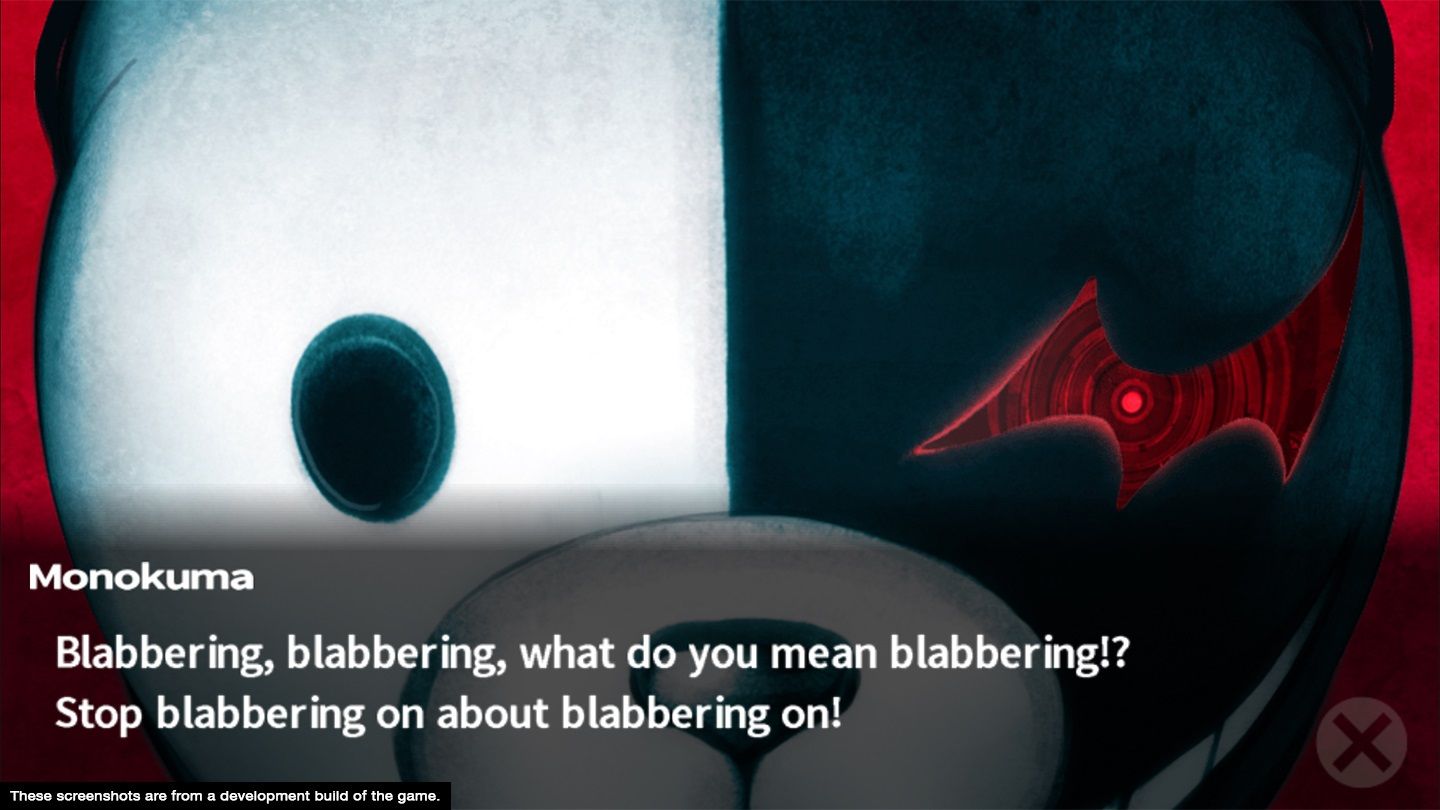It's been a long road for Danganronpa. Staring off as a duology for the Japanese PSP, this cult series made its way to Western markets courtesy of PS Vita. There, the visual novels managed to secure a place among the best on the handheld, a platform littered with quality Japanese releases, earning some rave reviews from this very site, and planting a heavily considered tattoo idea in this reviewer's mind (a laughing Monokuma, in case anyone is curious). After an action-focused spin-off and one successful anime series, the original two games saw release on PC via Steam. With the third entry on its way, developer and publisher Spike Chunsoft has seen fit to bundle the first two, Danganronpa: Trigger Happy Havoc and Danganronpa 2: Goodbye Despair together in a bargain package for PlayStation 4, and the platform is much richer for it.
The story centers around the students of Hope's Peak Academy. Known for only taking in students that are the best of the best, anyone who manages to graduate for the illustrious institution will never be left wanting for a leg up all through life due to the connections that are built while attending. Being an exclusive academy, students flock for a chance to attend, with only the "Ultimates" gaining a chance at the ring. The thing is, upon arriving, things are a bit odd. Once the students meet up, they compare notes, and realize that things just aren't quite what they seem. Soon, a black and white bear, Monokuma, arrives on the scene and proceeds to chew it with abandon. After he's had his fill, he explains the situation that the students are in: they are trapped and expected to live on grounds (a school in the first title and an island in the second) for the rest of their lives. That is, unless they murder another student and become "Blackened." Even that isn't good enough, as the other students have a chance to gather clues and hold a trial to figure out the culprit. If the group convicts the correct person, the Blackened dies. If not, everyone else dies and the Blackened gets to graduate and go free.
While the idea of a visual novel centering around a group of trapped people putting together what is happening around them is nothing new, the Danganronpa games arguably do it the best. (A good argument can be made for the Zero Escape series.) Much of that is thanks to the characters and writing. Both games do a great job with the cast of players in this drama. Each character is introduced as the "Ultimate" in some field or another, such as Celestia being the Ultimate Gambler. This, combined with their clothing, gives the player a broad generalization of that individual's personality, making learning the fellow students an easy matter. Using these broad tropes gives the writers a jumping off point to create some nuanced, interesting, and possibly crazy classmates to befriend. Even the villains are endearing, often with understandable reasons for their heel turn.
It's a good thing that this is done so well, as there is a lot of reading. A typical story chapter opens up with story, as the classmates go on with their day, discussing themselves or their current circumstances, and generally trying to bend the situation towards their own will, either by making the best of it, being fecal speckled buttholes, or just trying to be left alone. As long as the player goes in knowing this, it's easy to treat it like a comic book that occasionally swears at them (thanks, Mondo). This scenes help to build a connection between the player and the characters, using humor, drama, and pathos served in a candy colored wrapper.
Inevitably, a murder occurs. From there, an investigation occurs. This takes the form of exploring the environments, finding clues and beginning to piece together the circumstances that lead to one or more of the classmate's demise. These sections do feature more story, but tend to feel like a point and click adventure, with side scrolling exploration in the second. Once all the clues are gathered (and don't worry, the game won't proceed until all of the needed information is collected), it's time for the class trial phase.
These sections are where most of the actual gameplay is hiding. Using a variety of minigames to represent debating and arguing logical points, players will shoot truth bullets at false statements, solve hangman style puzzles, clear "white noise" in the form of everyone talking at once, and more. The puzzle and action sequences are strangely abstract portrayals of verbal discussion, but they somehow make the debates feel more real. Allowing the player to convey logical arguments and expose fallacies in a visceral manner is much more satisfying than simply choosing the correct piece of evidence and screaming "Take that," like in the Phoenix Wright titles. This portion allows the player to feel like a bad ass version of Encyclopedia Brown, except Bugs Meany could be anybody, and is not always the most obvious person.
Both of the games in this collection are fantastic, with each featuring about a dozen or so hours of gameplay, with more for those who want to wring every bit of content out of it, which is sorely tempting. If I was forced to choose a favorite between the two, I suppose I would have to go with the first. The setting in the school, with the metal plate covered windows and the slowly opening floors, has a more oppressive, claustrophobic feel that lends more to the series "wokka-wokka," jokey theme of despair. That said, the mechanics in the second are much better realized, with some hefty polishing to the trial mechanics, a virtual pet to raise, and a level system that encourages exploration. The characters in both are entertaining to be around, and each game has its surprises and overarching mysteries to solve, so there is no reason to skip either. It is recommended that new players start with the first one, as it does feed into the second.
As far as what's new in this collection, the answer is "not much." This collection is both titles packed together in HD. The upgraded resolution is noticeable, with the stylish scene transitions having more of a pop and the character portraits looking much sharper. Indeed, this did look much better than I personally remembered it when playing through the Vita versions. That is unusual enough, as rose-tinted glasses tend to require me to do a comparison on these re-releases to see a difference. Otherwise, returning players won't see much of anything new here outside of a fresh trophy list. Anyone who cares about that should know that the two titles share one list, which is unusual for these types of collections.
Closing Comments:
Numerous Japanese visual novels have been coming to English-speaking audiences lately, many of them excellent. The Zero Escape series manages to excite and confound, the Phoenix Wright games lets players live out a Japanese take on Law & Order and even BlazBlue got in on it via the X-Blaze series. Danganronpa manages to eke out a place at the top of the pack. Players new to the series have no reason to pass up this collection. Both games are extremely well written and hard to put down. Returning players who already know the solutions to all of the conundrums but don't mind re-experiencing the story will find a better looking version of the original two titles here. Since this is releasing at a lower price, that's enough of a reason to go through again in preparation for Danganronpa V3.




